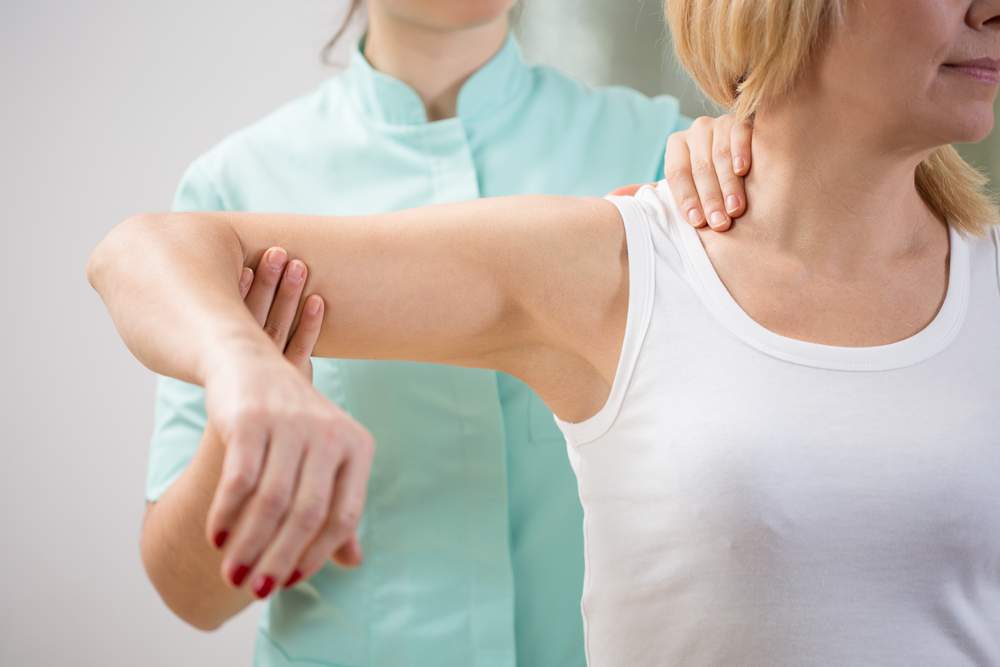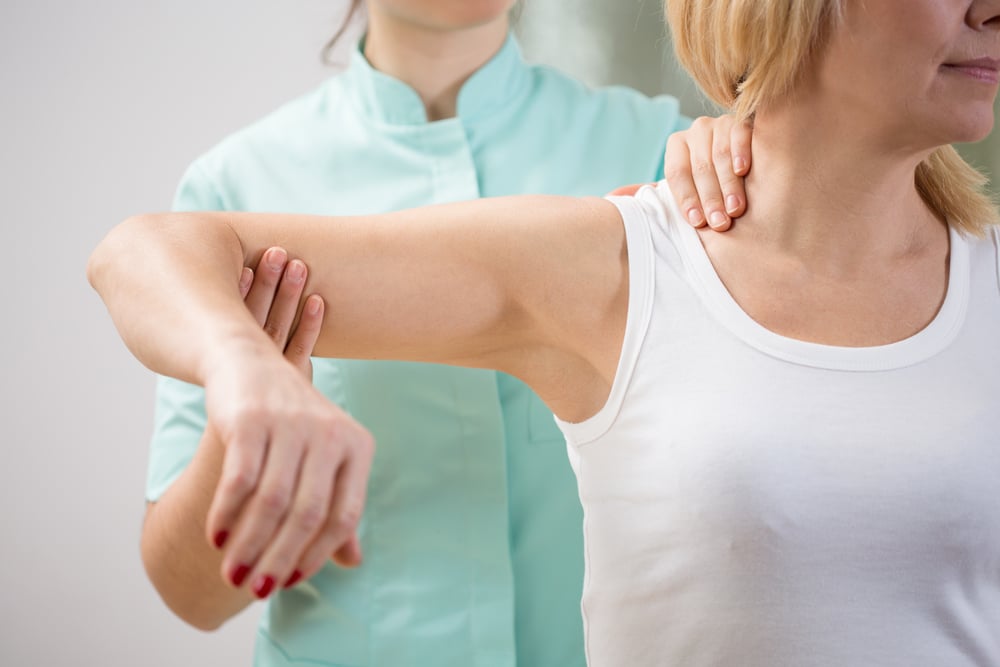The Power of Physiotherapy: A Comprehensive Guide to Treating Rotator Cuff Injuries for Athletes

The Power of Physiotherapy: A Comprehensive Guide to Treating Rotator Cuff Injuries for Athletes
If you are an athlete, then you know how important it is to look after your body and take regular steps toward keeping yourself fit and healthy. However, injuries can still occur even with the best care given to maintain your physical health - one of the most common types being rotator cuff injuries. At Human Integrated Performance, we understand how difficult these injuries can be for athletes. For that reason, this blog post will provide a comprehensive guide to treating rotator cuff injuries through physiotherapy; giving you all the information necessary so that you can make decisions regarding treatments and rehabilitation plans that work for you!

Table of Contents
What is a Rotator Cuff Injury and How Does It Affect Athletes?
Causes of Rotator Cuff Injury
Diagnosis and Treatment Options for Rotator Cuff Injury
Physiotherapy as a Treatment Option for Rotator Cuff Injury
Conclusion
FAQ
What Is A Rotator Cuff Injury and How Does It Affect Athletes?
The rotator cuff consists of a group of four muscles and their tendons surrounding the shoulder joint. When these muscles become overused, damaged, or torn due to repetitive motion or trauma, it leads to a rotator cuff injury. This type of injury is most commonly seen in athletes who perform overhead throwing or lifting activities on a regular basis. The pain associated with a rotator cuff injury can range from mild discomfort to severe and debilitating pain that limits one’s ability to move the arm and shoulder.
Rotator cuff injuries can cause inflammation and weakness in the affected area, leading to decreased mobility and strength in the shoulder. Swelling and tenderness are also common symptoms associated with this type of injury. As time passes without treatment, athletes may begin experiencing further limitation of motion in their injured shoulder as well as increased pain when attempting certain motions or activities. As a result, some athletes may suffer from reduced performance due to their inability to train at an optimal level because of their weakened shoulder muscles.
Furthermore, if left untreated, many cases of rotator cuff injuries can progress into more serious conditions such as tendonitis or even full-thickness tears which may require surgical intervention for proper healing. Therefore, it is important for athletes to seek professional medical help immediately if they believe they have sustained an injury in order to prevent any further damage and ensure proper healing processes are taking place.
Causes of Rotator Cuff Injury
The rotator cuff can become injured due to overuse or trauma. Common causes of rotator cuff injuries include repetitive motions during activities like swimming, pitching, or painting, as well as from falls or direct contact with another person or object. Additionally, age can lead to injury as the shoulder slowly weakens over time and is more prone to injury due to general wear and tear. Poor posture may also be a contributing factor; when rounded shoulders are present for prolonged periods of time it increases stress on the muscles and tendons of the rotator cuff. Finally, certain medical conditions like arthritis can cause inflammation in the area which leads to weakness and further increases risk of injury.
Regardless of the cause, it’s important to recognize the warning signs associated with rotator cuff injuries: pain located on top of your shoulder (especially when reaching overhead), weakness when trying to lift objects, decreased range of motion during everyday activities, “popping” noises coming from your shoulder joint during movement, and pain that wakes you up at night. If you experience any of these symptoms it’s important to see a doctor right away so they can make an accurate diagnosis and recommend treatment options such as physical therapy or medications.
Diagnosis and Treatment Options For Rotator Cuff Injury
When it comes to rotator cuff injuries, diagnosis and treatment are essential components of successful recovery. It's important to diagnose the injury early on in order to prevent further damage and begin treatment accordingly.
The first step in diagnosing a rotator cuff injury is a physical exam by an experienced doctor or physiotherapist. They will assess your shoulder’s strength and range of motion through various tests. They will also likely take X-rays and/or MRI scans in order to pinpoint the source of the injury. Once your doctor has identified the cause of the injury, they can create an individualized treatment plan for you.
Treatment options vary depending on the severity of the injury but may include rest, physical therapy, anti-inflammatory medications, cortisone injections, or even surgical repair if necessary. Physical therapy is usually recommended as a way to help strengthen weakened muscles around the shoulder joint while reducing pain and inflammation. Your physical therapist will provide exercises specifically designed for your particular condition which could include range-of-motion exercises, stretching exercises, strength training exercises with weights or bands, and manual therapy techniques such as massage or joint mobilization.
If your doctor recommends surgery for your rotator cuff injury, this would involve repairing torn tendons by reattaching them back to the bone using sutures, anchors, or other fixation devices. Postoperative rehabilitation typically involves intensive physical therapy sessions which focus on regaining strength in weakened muscles surrounding the shoulder joint while maintaining a proper range of motion throughout all stages of healing.
It's important to acknowledge that recovery from a rotator cuff injury can be a lengthy process which requires patience and dedication from both you and your healthcare team. With appropriate diagnosis and treatment tailored specifically for you though, chances are high that you’ll be able to successfully recover from this type of injury without any long-term effects on your shoulder joint’s function.
Physiotherapy as a Treatment Option for Rotator Cuff Injury
The rotator cuff is comprised of four muscles in the shoulder that connect the humerus to the scapula, providing stability and allowing for a wide range of motion. When injury occurs, such as tears or strains, a person may experience difficulty performing basic movements like lifting their arm overhead. This is where physiotherapy can be beneficial.
Physiotherapy can help improve strength, flexibility and range of motion in the affected area by combining exercise with other modalities such as manual therapy and/or electrotherapy. Exercises are tailored to each individual and are designed to gradually increase strength and flexibility while avoiding further damage or irritation to the area. Manual therapies, such as massage or joint mobilizations, can help reduce pain and improve mobility in the shoulder by releasing tight muscles and fascia. Electrotherapy treatments such as ultrasound, laser therapy or low-level laser (LLLT) can help reduce inflammation and promote healing. While all these treatments are effective alone, when combined they produce even better results in terms of reducing pain, improving function and promoting healing.
Overall, physiotherapy is an effective treatment option for rotator cuff injuries that helps improve pain levels, strength, flexibility, range of motion and other shoulder functions necessary for daily activities. It is important to note that healing time varies depending on factors like age and severity of injury; however patients typically begin seeing improvement within 4-6 weeks with consistent treatment.
Conclusion
Having been diagnosed with a rotator cuff injury, the patient should take certain steps in order to ensure that their recovery is as smooth and successful as possible. The first step is to rest the affected area for at least 48 hours. This allows the inflammation to subside and can help alleviate some of the pain associated with the injury. After resting, it’s important to begin physical therapy soon after diagnosis in order to speed up recovery and restore strength and mobility to the shoulder. Physical therapy typically involves a combination of exercises, stretches and massage techniques designed to promote healing, improve range of motion and address alignment issues that contribute to rotator cuff injuries.
Patients should avoid activities such as overhead movements or heavy lifting until full range of motion has been restored by physical therapy. Finally, patients should pay close attention to symptoms throughout their recovery process in order to identify any changes or setbacks that may indicate an increased risk of re-injury or complications due to mismanagement of treatment.
A rotator cuff injury can be a difficult experience for any athlete. While athletes may require surgery for a rotator cuff tear, physiotherapy can play a major role in the rehabilitation process. The professionals at Human Integrated Performance offer the highest quality care through an individualized treatment plan designed specifically for each patient’s needs. Knowing that a rotator cuff injury can have long-term effects on an athlete’s career, it is essential to seek professional advice and receive an accurate diagnosis and appropriate treatment in order to resume their activities quickly and safely. If you think you may have suffered from a rotator cuff injury, don't wait to get help; contact the physiotherapy professionals at Human Integrated Performance today to get your body back in action!
FAQ
What is a rotator cuff injury and what causes it?
A rotator cuff injury is a condition in which the muscles and tendons surrounding the shoulder joint become overused, damaged, or torn. Common causes of rotator cuff injuries include repetitive motions during activities like swimming, pitching, or painting, as well as from falls or direct contact with another person or object. Additionally, age and poor posture can lead to injury, as well as certain medical conditions like arthritis.
What are the symptoms of a rotator cuff injury?
Symptoms of a rotator cuff injury include pain located on top of the shoulder (especially when reaching overhead), weakness when trying to lift objects, decreased range of motion during everyday activities, “popping” noises coming from the shoulder joint during movement, and pain that wakes you up at night.How is a rotator cuff injury diagnosed and treated?
A rotator cuff injury is diagnosed through a physical exam by an experienced doctor or physiotherapist. Additional diagnostic tools such as X-rays and MRI scans may be used to pinpoint the source of the injury. Treatment options for rotator cuff injuries include physical therapy, medications, and in some cases, surgery. It is important to diagnose the injury early on in order to prevent further damage and begin treatment accordingly.